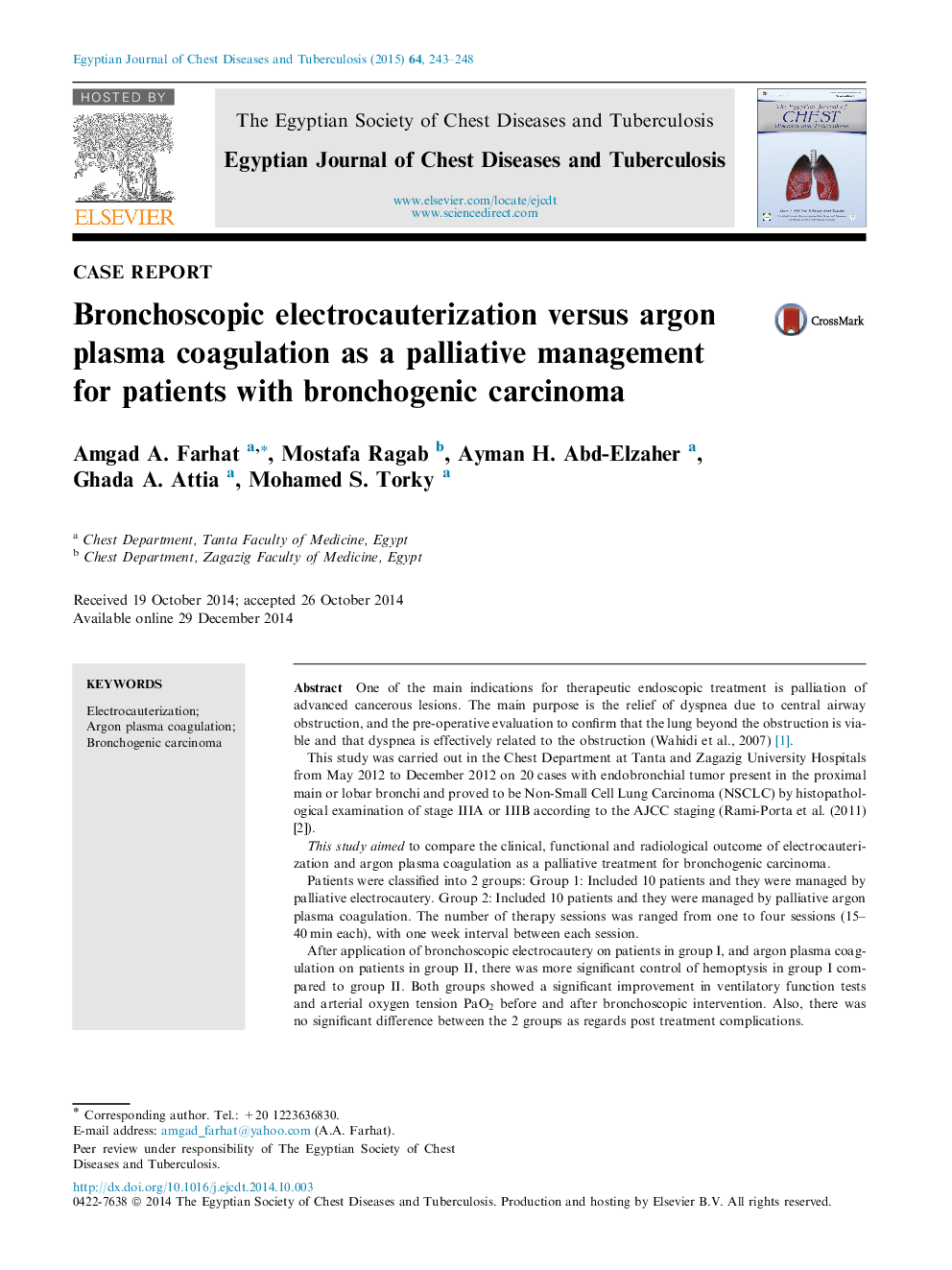| Article ID | Journal | Published Year | Pages | File Type |
|---|---|---|---|---|
| 3400112 | Egyptian Journal of Chest Diseases and Tuberculosis | 2015 | 6 Pages |
One of the main indications for therapeutic endoscopic treatment is palliation of advanced cancerous lesions. The main purpose is the relief of dyspnea due to central airway obstruction, and the pre-operative evaluation to confirm that the lung beyond the obstruction is viable and that dyspnea is effectively related to the obstruction (Wahidi et al., 2007) [1].This study was carried out in the Chest Department at Tanta and Zagazig University Hospitals from May 2012 to December 2012 on 20 cases with endobronchial tumor present in the proximal main or lobar bronchi and proved to be Non-Small Cell Lung Carcinoma (NSCLC) by histopathological examination of stage IIIA or IIIB according to the AJCC staging (Rami-Porta et al. (2011) [2]).This study aimed to compare the clinical, functional and radiological outcome of electrocauterization and argon plasma coagulation as a palliative treatment for bronchogenic carcinoma.Patients were classified into 2 groups: Group 1: Included 10 patients and they were managed by palliative electrocautery. Group 2: Included 10 patients and they were managed by palliative argon plasma coagulation. The number of therapy sessions was ranged from one to four sessions (15–40 min each), with one week interval between each session.After application of bronchoscopic electrocautery on patients in group I, and argon plasma coagulation on patients in group II, there was more significant control of hemoptysis in group I compared to group II. Both groups showed a significant improvement in ventilatory function tests and arterial oxygen tension PaO2 before and after bronchoscopic intervention. Also, there was no significant difference between the 2 groups as regards post treatment complications.It was concluded that, therapeutic bronchoscopic intervention either by electrocautery or argon plasma coagulation is a safe and effective method for palliative management of patients with central malignant airway obstruction.
